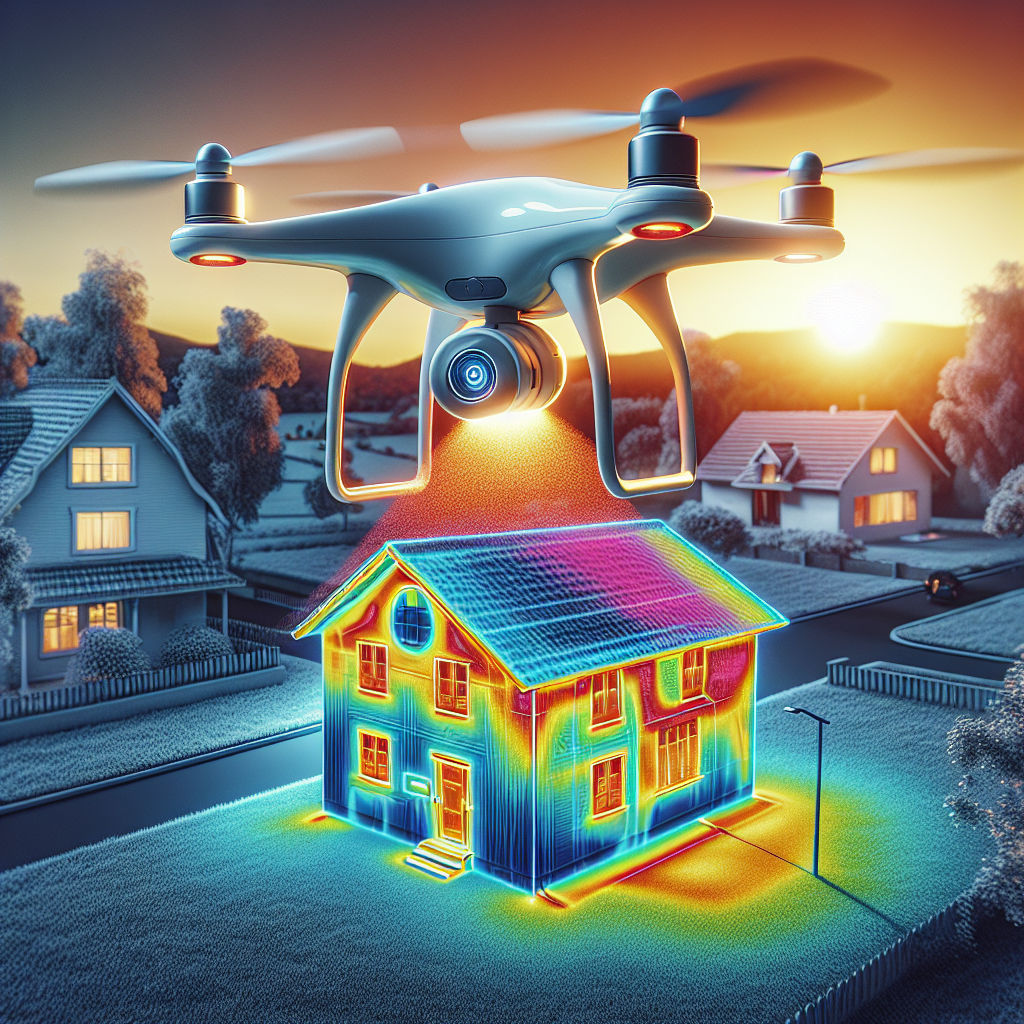The integration of drones and thermal imaging technology has brought about a paradigm shift in the field of home inspections. This innovative combination allows for more efficient, accurate, and comprehensive assessments of residential properties. By leveraging drones’ aerial capabilities and thermal imaging’s ability to detect heat patterns, inspectors can now identify potential issues such as energy leaks, electrical problems, insulation deficiencies, and moisture intrusion with greater precision. This introduction sets the stage for exploring the transformative impact that this integration has had on home inspections.
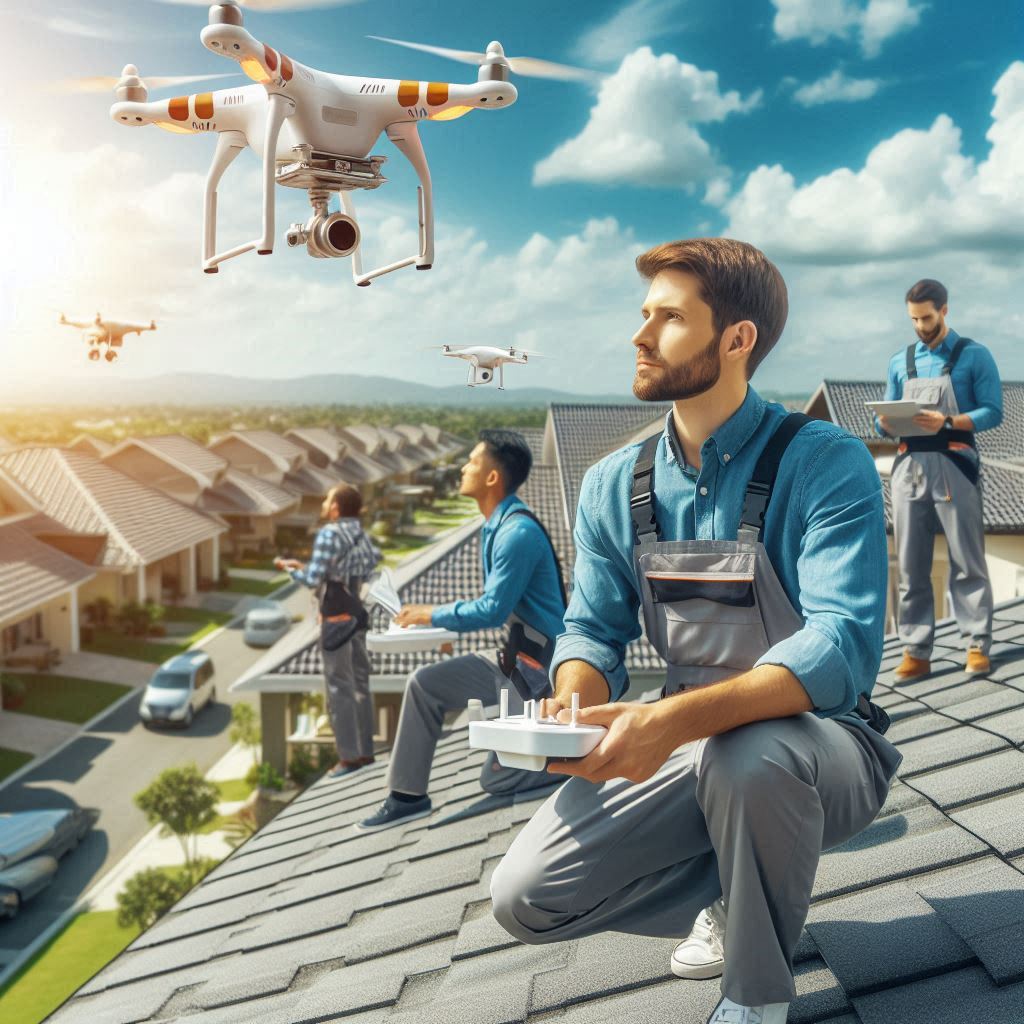
The Benefits of Using Drones for Home Inspections
The integration of drones and thermal imaging technology has revolutionized the field of home inspections, bringing about a paradigm shift in the way these inspections are conducted. Drones, also known as unmanned aerial vehicles (UAVs), equipped with thermal imaging cameras have made it possible to gather detailed and accurate data on the condition of homes without ever setting foot inside them. This article will explore the numerous benefits that using drones for home inspections brings to both inspectors and homeowners.
One of the most significant advantages of utilizing drones for home inspections is their ability to access areas that may otherwise be difficult or dangerous for human inspectors to reach. Drones can effortlessly navigate tight spaces such as attics, crawlspaces, or rooftops, eliminating the need for inspectors to climb ladders or physically maneuver through potentially hazardous environments. This not only increases efficiency but also minimizes potential risks associated with physical inspections.

Furthermore, by employing thermal imaging technology alongside drone inspection capabilities, inspectors can detect hidden issues within a property more effectively. Thermal cameras capture infrared radiation emitted by objects and convert it into visible images representing temperature variations. By analyzing these images, inspectors can identify problems like moisture intrusion, electrical issues, insulation gaps or leaks far more easily than traditional visual examinations alone would allow. Consequently, this combination provides an added layer of accuracy and reliability during assessments.
Additionally, drone-based home inspections save time and resources compared to conventional methods. The use of drones allows for faster completion of inspections due to their agility and high mobility compared to manual labor efforts required in standard procedures. Inspectors no longer need extended periods spent manually examining every inch; instead, they can fly a drone equipped with thermal imaging equipment around the property swiftly capturing comprehensive data in a fraction of the time.
In terms of cost-effectiveness, integrating drones into home inspection practices proves highly advantageous too. Traditional methods often involve hiring multiple professionals specialized in various trades – electricians inspecting electrical systems while plumbers examine pipes and fixtures. Drones equipped with thermal imaging technology eliminate the need for multiple inspections, as a single comprehensive scan captures vital data related to various aspects of a property’s condition. This reduction in required labor significantly decreases expenses associated with hiring multiple specialists, ultimately saving homeowners money.
Furthermore, drone-based home inspections offer increased accessibility to properties that may be challenging to inspect due to geographical or environmental factors. For example, properties located in remote areas or those affected by natural disasters like floods or fires can be efficiently assessed using drones without risking human safety. By providing an aerial perspective combined with thermal imaging capabilities, inspectors gain insight into hard-to-reach areas regardless of the surrounding conditions.
In conclusion, the integration of drones and thermal imaging technology has brought about a paradigm shift in the field of home inspections. The benefits derived from using drones for these assessments are plentiful – improved access to difficult areas, enhanced accuracy through thermal imaging analysis, time and cost savings compared to traditional methods and increased accessibility regardless of environmental factors all contribute to making drone-based home inspections highly valuable for both inspectors and homeowners alike. As this technology continues to advance further and becomes more widely adopted within the industry, it is evident that its influence on home inspection practices will continue growing exponentially in years to come.
How Thermal Imaging Technology Enhances the Accuracy of Inspections
The integration of drones and thermal imaging technology has revolutionized the field of home inspections, providing a paradigm shift in the accuracy and efficiency of these assessments. Thermal imaging technology, also known as infrared thermography, allows inspectors to detect anomalies that are invisible to the naked eye. By capturing images that show variations in temperature, this advanced tool helps identify hidden issues within buildings such as moisture intrusion, insulation deficiencies, electrical problems, and even potential structural defects.
Traditional visual inspections have limitations when it comes to identifying hidden defects or irregularities within a structure. Inspectors often rely on their experience and visual observation skills alone. However, thermal imaging technology takes inspection processes to an entirely new level by making use of heat signatures emitted from objects or surfaces.
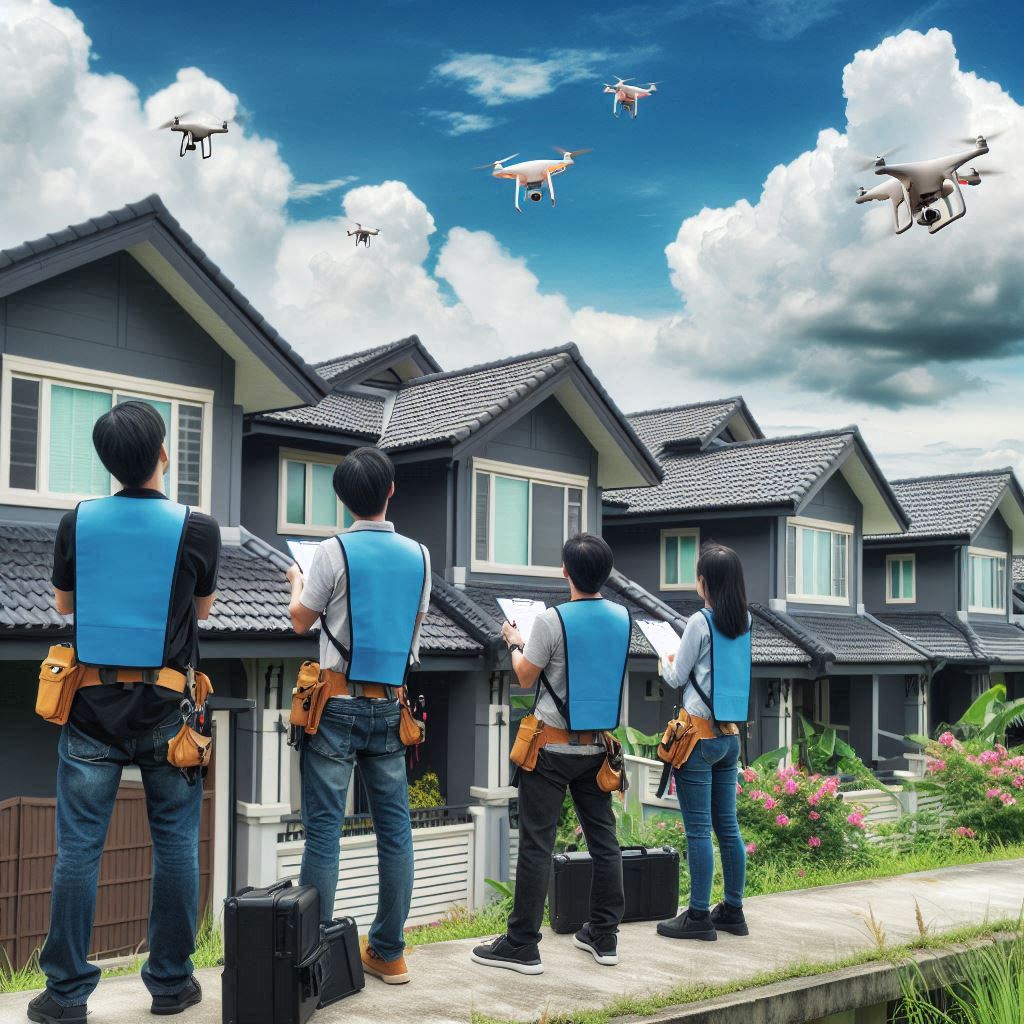
One key advantage of integrating drones with thermal cameras is the ability to access hard-to-reach areas with ease. Drones equipped with thermal imaging cameras can fly over roofs or hover near tall structures where inspectors would otherwise need expensive equipment like cherry pickers or scaffolding for close examination. This not only enhances safety for inspectors but also significantly reduces costs associated with hiring additional machinery or personnel.
Furthermore, using drones enables inspectors to capture high-resolution imagery from multiple angles and elevations throughout the entire property. The drone’s flight path can be carefully planned so that no area is left uninspected. Combined with thermal imaging capabilities, this comprehensive approach provides a more accurate representation of potential issues within a building.
Thermal imaging offers several benefits compared to traditional inspection methods. For instance, it enables early detection of water leaks by highlighting areas where there is abnormal moisture accumulation due to faulty plumbing systems or leaky roofs. These hidden water intrusions may lead to severe damage if left unaddressed for long periods.
Moreover, inadequate insulation causes unnecessary energy loss in residential properties which ultimately leads to higher utility bills for homeowners. Traditional visual inspections might overlook poorly insulated areas unless obvious signs such as drafts are present during the assessment. However, thermal imaging easily identifies such areas as it visualizes the temperature differences between well-insulated and poorly insulated regions.
Electrical problems are another concern that can be efficiently detected using thermal imaging technology. Faulty electrical connections often generate excess heat due to resistance or overloading, which could potentially lead to electrical fires. Thermal cameras can detect these abnormal hotspots by capturing the infrared radiation emitted from such problematic connections, allowing inspectors to address potential hazards promptly.
Lastly, structural issues in buildings may also be identified through thermal imaging inspections. By scanning exterior walls or other critical components of a structure, inspectors can identify temperature variations that indicate potential defects like missing insulation or cracks in foundations. These early warnings help homeowners prevent significant damage and expensive repairs down the line.
In conclusion, integrating drones with thermal imaging technology has brought about a paradigm shift in home inspections by significantly enhancing their accuracy and efficiency. This advanced tool allows inspectors to uncover hidden issues within structures that would otherwise go unnoticed during traditional visual inspections alone. From detecting water leaks and insulation deficiencies to identifying electrical problems and potential structural defects, thermal imaging technology provides valuable insights into a property’s condition. As this integration becomes more widely adopted, it is expected to become an indispensable asset for home inspection professionals seeking accurate assessments while reducing costs and ensuring client satisfaction.
Exploring the Future Potential of Drone-Assisted Home Inspections
The integration of drones and thermal imaging technology has the potential to revolutionize home inspections. This combination represents a paradigm shift in the field, offering enhanced efficiency and accuracy compared to traditional methods. By exploring the future potential of drone-assisted home inspections, we can understand how this technological advancement can improve inspection processes and benefit both inspectors and homeowners.
Drones equipped with thermal imaging cameras have become increasingly popular tools for conducting home inspections. These devices allow inspectors to gain an aerial perspective, capturing high-resolution images of properties from various angles. With their ability to fly over roofs, access difficult-to-reach areas, and cover large areas quickly, drones offer a level of convenience that was previously unimaginable.
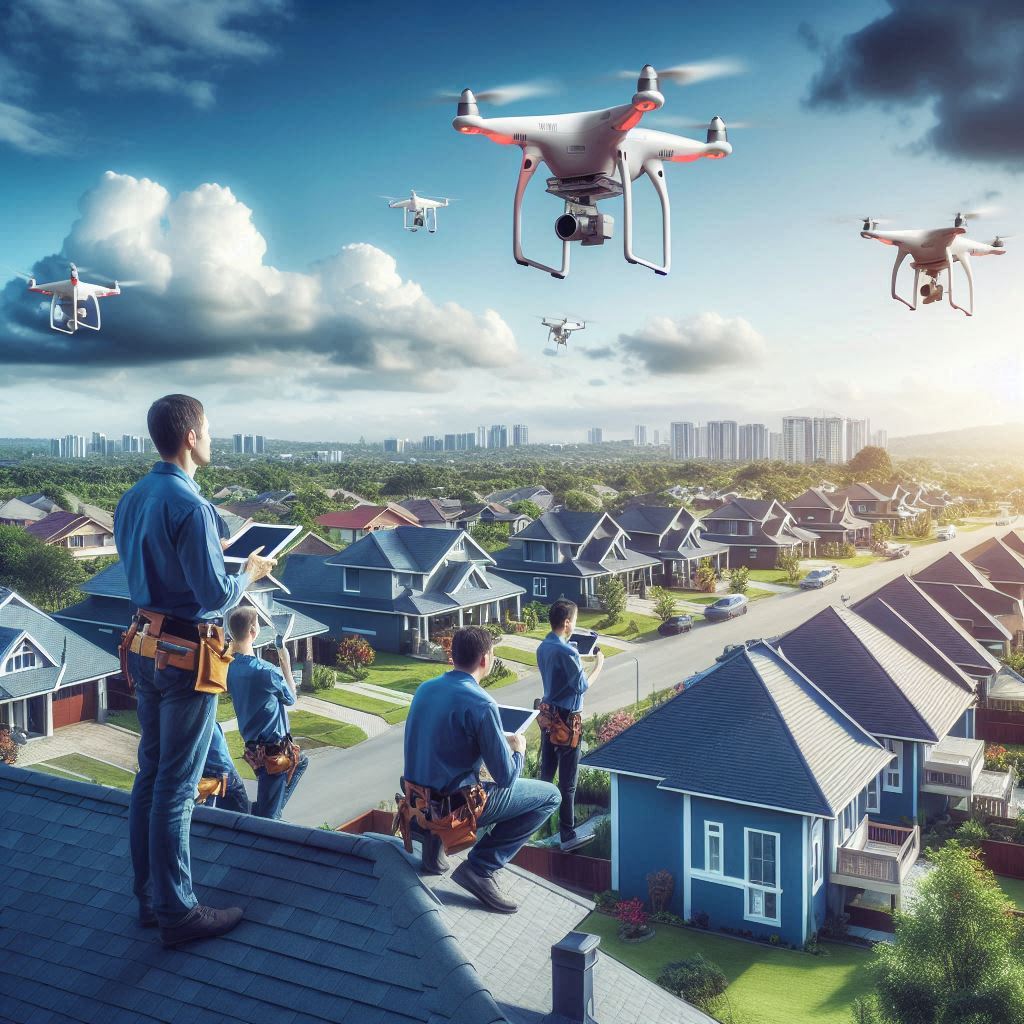
One significant advantage that drones bring to the table is their ability to perform visual inspections without causing any damage or disruption. Traditional methods often involve physical access to certain parts of a property which can lead to unintended consequences like broken tiles or damaged roofing materials. Drones eliminate these risks by allowing inspectors to visually assess homes remotely. Moreover, they enable close-up examinations even in hard-to-reach places such as chimneys or rooftops.
Another aspect where drone-assisted home inspections shine is through their integration with thermal imaging technology. Thermal cameras mounted on drones capture infrared radiation emitted by objects, enabling them to detect variations in temperature across different surfaces. This technology reveals hidden issues such as water leaks, insulation deficiencies, electrical problems, or even pest infestations that may not be visible through conventional visual inspection alone.
Thermal imaging provides valuable insights into a property’s energy efficiency by identifying areas where heat loss occurs. It helps pinpoint air leaks around windows and doors or insulation gaps within walls – information crucial for improving energy consumption and reducing heating costs.
In addition to its practical applications during routine inspections, drone-assisted thermal imaging could prove invaluable during disaster response situations. In scenarios like wildfires or floods where buildings are inaccessible due to safety concerns or extensive damage, drones can provide real-time data and identify areas that require immediate attention. This enables emergency responders to prioritize their efforts effectively and make informed decisions.
However, while the potential benefits of integrating drones and thermal imaging technology into home inspections are vast, challenges must be addressed before widespread adoption becomes a reality. Concerns over privacy, safety regulations, and operator training need to be carefully considered. Ensuring compliance with existing laws regarding airspace usage is crucial, as is developing robust guidelines for drone operation within residential areas.
Moreover, the cost associated with investing in drones and thermal cameras may present financial barriers for some inspection businesses or individual inspectors. However, as this technology continues to evolve and become more accessible in terms of pricing and availability, these barriers are likely to diminish over time.
In conclusion, the integration of drones and thermal imaging technology represents a paradigm shift in home inspections. The ability to conduct remote visual assessments from an aerial perspective combined with the power of thermal imaging offers significant advantages over traditional methods. By enabling efficient inspections without causing any damage or disruption while providing valuable insights into energy efficiency issues, this innovative approach holds immense promise for the future of home inspections. With careful consideration given to concerns surrounding privacy, safety regulations, operator training, and affordability aspects – we can expect drone-assisted home inspections using thermal imaging technology to become increasingly commonplace in years to come.
The Role of Drones in Improving Efficiency and Safety in Home Inspections
The integration of drones and thermal imaging technology has revolutionized the field of home inspections. This paradigm shift brings forth numerous benefits, including improved efficiency and safety. Drones are unmanned aerial vehicles that have rapidly gained popularity in various industries, including real estate. These small aircraft can be equipped with thermal imaging cameras to capture high-resolution images of a property’s exterior and interior.
One key role that drones play in home inspections is improving efficiency. Traditionally, inspectors would conduct their assessments on foot, which could be time-consuming and physically demanding. With the introduction of drones, inspectors can now effortlessly navigate through hard-to-reach areas such as roofs, chimneys, or tall structures without any physical strain. Drones equipped with thermal imaging cameras provide detailed visual data that was previously inaccessible or required costly equipment like helicopters or cranes.
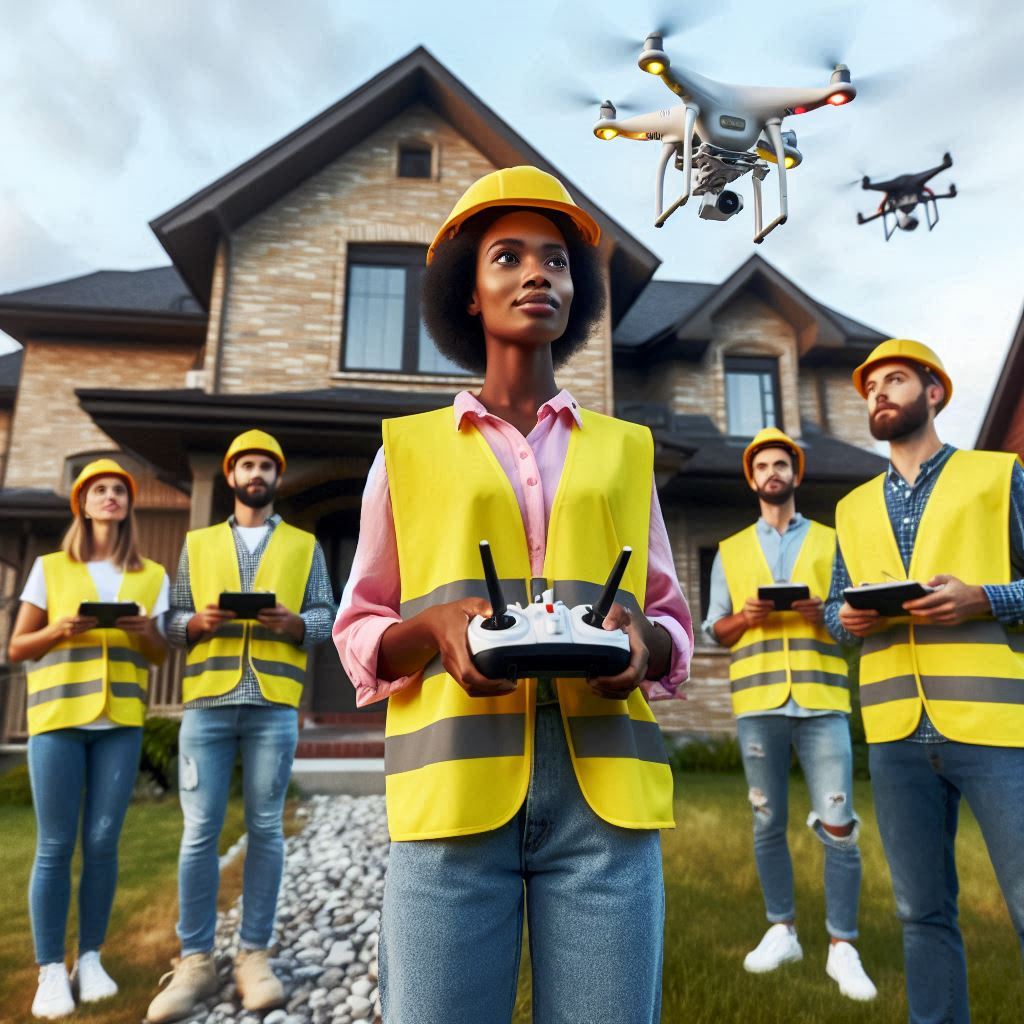
Furthermore, the use of drones significantly reduces inspection timeframes compared to traditional methods. By swiftly covering large areas from an aerial perspective, inspectors can quickly identify potential issues such as heat loss or water leaks within a building’s structure. The ability to collect extensive information efficiently allows for more comprehensive reports while minimizing human error during assessments.
In addition to enhancing efficiency, the integration of drones into home inspections also greatly improves safety measures for both inspectors and homeowners alike. By using these advanced technologies instead of relying solely on human intervention, there is a reduced risk associated with manual labor-related accidents or exposure to hazardous environments during inspections.
For example, inspecting a roof used to require ladders and harnesses – both potentially risky procedures for an inspector – but now it can be done remotely using drones armed with thermal imaging capabilities. This eliminates direct physical contact between humans and dangerous conditions such as slippery surfaces or weak rooftops.
Moreover, drone-assisted thermography allows professionals to detect hidden electrical faults without needing physical access inside walls or crawl spaces where risks may arise due to inadequate ventilation systems or concealed pests like termites; both scenarios pose potential safety hazards for inspectors. The ability to detect these issues from a safe distance and still obtain accurate results ensures the overall well-being of everyone involved in the inspection process.
While drones offer substantial benefits, it is important to note that they do not replace the expertise of human inspectors. Instead, they act as valuable tools that complement their skills and enhance their capabilities. The interpretation and analysis of thermal imaging data collected by drones still require trained professionals who can identify anomalies or potential problems accurately.
To conclude, the integration of drones with thermal imaging technology has brought about a significant paradigm shift in home inspections. Their use improves efficiency by reducing inspection timeframes and allowing access to previously inaccessible areas swiftly. Moreover, drone-assisted thermography enhances safety measures for both inspectors and homeowners, minimizing physical risks associated with traditional methods. As this technology continues to advance, its role in home inspections will only become more prominent in ensuring thorough assessments while safeguarding individuals’ wellbeing during the process
Key Considerations When Integrating Thermal Imaging with Drone Technology
The integration of drones and thermal imaging technology has led to a paradigm shift in the field of home inspections. This innovative combination allows for more efficient and accurate assessments of properties, saving time and resources for both inspectors and homeowners. However, there are key considerations that need to be taken into account when integrating thermal imaging with drone technology.
Firstly, it is important to understand the capabilities and limitations of both drones and thermal imaging devices. Drones provide an aerial perspective that was previously inaccessible to home inspectors. They can capture high-resolution images or videos of hard-to-reach areas such as rooftops, chimneys, gutters, or tall structures. On the other hand, thermal imaging cameras can detect heat signatures emitted by objects or surfaces, providing valuable information about potential issues like insulation deficiencies or electrical problems.
However, it is crucial to recognize that drones have certain limitations in terms of flight time, range, and payload capacity. These factors may impact the effectiveness of using thermal imaging technology from a drone platform. The battery life may restrict the amount of time spent capturing images or conducting inspections in large properties. Additionally, weather conditions such as strong winds or rain may hinder the operation of drones.
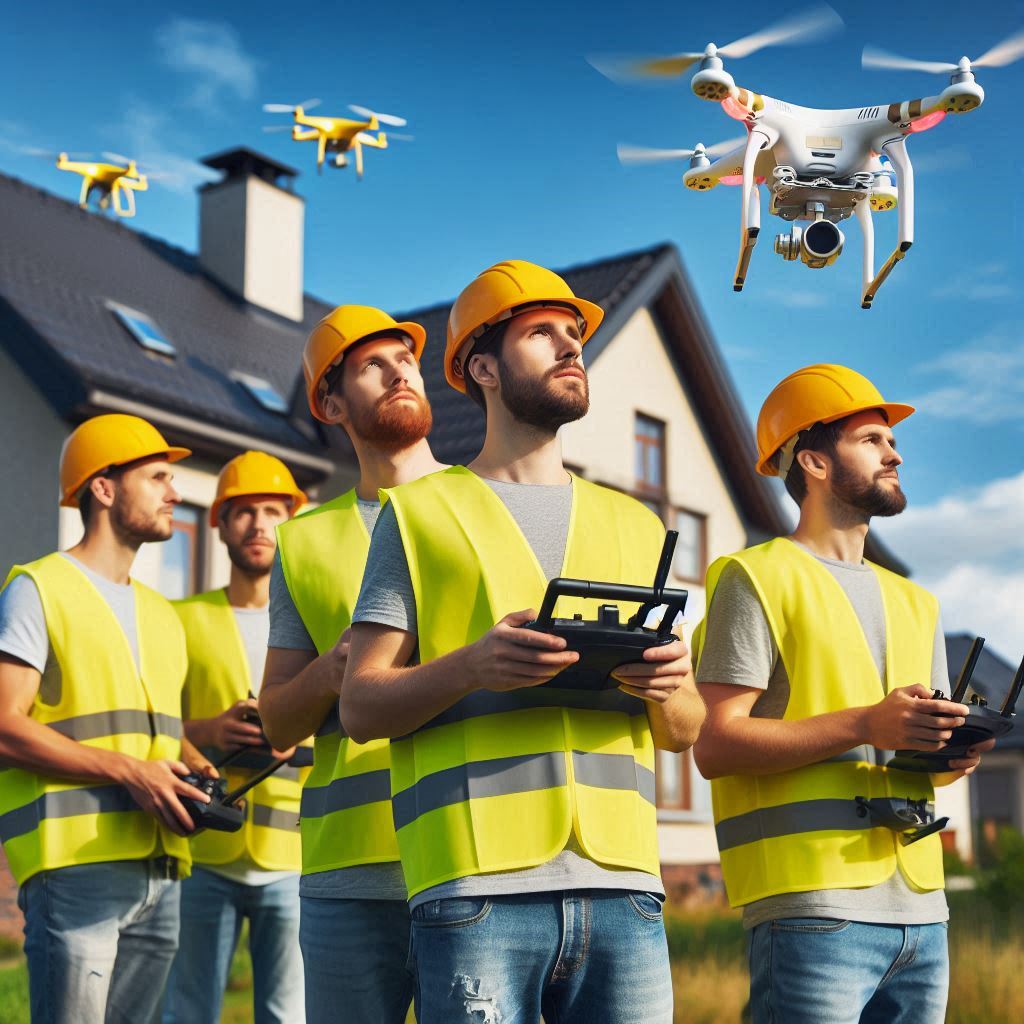
Another consideration is the expertise required to operate both drones and thermal imaging equipment effectively. Home inspectors must undergo proper training on how to maneuver drones safely while also being proficient in analyzing thermal images accurately. Understanding temperature variations requires experience and knowledge regarding building construction techniques and materials.
Moreover, privacy concerns should be addressed when implementing drone-based home inspections with thermal imaging capabilities. Drones equipped with cameras raise ethical questions about invasion of privacy if not operated responsibly. Inspectors must ensure they comply with local regulations regarding data collection through unmanned aerial vehicles (UAVs) without infringing on individual rights.
Cost is another factor that needs careful consideration when integrating these technologies into home inspections practices.
The initial investment involved in purchasing quality drone hardware along with specialized thermographic equipment can be substantial. Moreover, ongoing costs for training, maintenance, and insurance must also be accounted for in order to ensure the sustainability of this integrated approach.
Furthermore, it is essential to communicate with homeowners about the benefits and limitations of using drones and thermal imaging technology in their home inspections. Providing clear explanations on how these tools can enhance accuracy and efficiency will help alleviate any concerns or skepticism that homeowners may have regarding the integration of these technologies into the inspection process.
In conclusion, integrating thermal imaging with drone technology has transformed the field of home inspections by providing an aerial perspective and detecting heat signatures that were previously inaccessible. However, several key considerations need to be taken into account when implementing this integrated approach. These include understanding the capabilities and limitations of both drones and thermal imaging devices, addressing privacy concerns, ensuring proper training for inspectors operating these technologies effectively, considering cost implications, as well as effectively communicating with homeowners about its benefits. By carefully considering these factors, home inspections can benefit greatly from this innovative combination of drone and thermal imaging technology.
Overcoming Challenges: Regulatory Compliance for Drone-Assisted Home Inspections
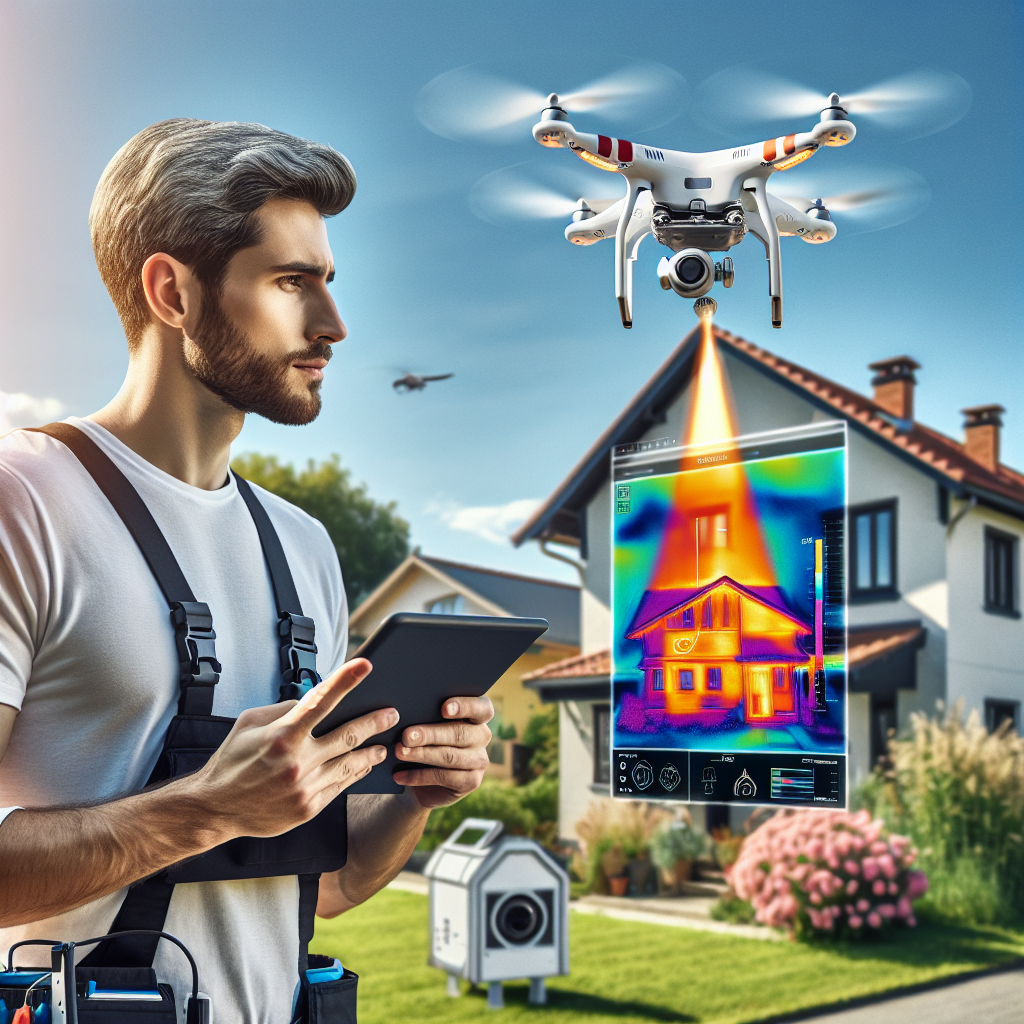
The integration of drones and thermal imaging technology has brought about a paradigm shift in home inspections, offering numerous benefits such as increased efficiency and improved accuracy. However, this innovative approach to home inspections is not without its challenges. One of the main hurdles that needs to be overcome is regulatory compliance for drone-assisted home inspections.
Regulations regarding the use of drones in various industries have been put in place by government authorities to ensure safety and privacy. In the case of home inspections, these regulations aim to strike a balance between allowing the use of drones for their potential benefits while addressing concerns related to privacy infringement and public safety.
One key aspect of regulatory compliance for drone-assisted home inspections is obtaining proper licensing. Pilots who operate drones for commercial purposes are required to obtain a Remote Pilot Certificate from the Federal Aviation Administration (FAA) in the United States, or an equivalent license from relevant authorities in other countries. This certification ensures that pilots possess sufficient knowledge and skills to safely operate drones during home inspections.
Another crucial aspect is adhering to flight restrictions imposed by aviation agencies. Drones are subject to altitude limits, no-fly zones, and restricted airspace regulations set by aviation authorities around airports and other sensitive areas. Compliance with these restrictions helps maintain air traffic safety while minimizing potential risks associated with drone operations during home inspections.
Privacy concerns also play a significant role in ensuring regulatory compliance for drone-assisted home inspections. The use of thermal imaging technology allows inspectors to detect anomalies such as heat leaks or water damage inside homes non-invasively. However, this capability raises legitimate concerns about privacy violations if not appropriately addressed.
To address these concerns, inspectors must respect privacy laws when conducting drone-assisted home inspections. This includes informing property owners beforehand about the purpose and scope of the inspection while seeking their consent whenever necessary. Inspectors should also refrain from capturing images or data beyond what is essential for assessment purposes and handle any collected information responsibly according to applicable privacy regulations.
Training and education are fundamental components of regulatory compliance for drone-assisted home inspections. Inspectors must stay up-to-date with evolving regulations, industry best practices, and technological advancements to ensure safe and effective operation of drones. This includes understanding the limitations and capabilities of thermal imaging technology to accurately interpret data gathered during inspections.
Collaboration between regulatory bodies, industry stakeholders, and technology providers is crucial in overcoming challenges related to regulatory compliance for drone-assisted home inspections. Regular dialogue can help identify emerging issues or gaps in existing regulations that need to be addressed promptly. It also enables the sharing of knowledge and expertise among different parties involved in ensuring safe, efficient, and compliant use of drones during home inspections.
In conclusion, while the integration of drones and thermal imaging technology has revolutionized the field of home inspections, regulatory compliance remains a significant challenge. Obtaining proper licensing, adhering to flight restrictions, respecting privacy laws, investing in training and education for inspectors are all essential aspects that need to be considered when conducting drone-assisted home inspections. By addressing these challenges head-on through collaboration between relevant stakeholders, we can embrace this paradigm shift while safeguarding safety standards and privacy concerns effectively.
The Impact of Integrated Drones and Thermal Imaging on Insurance Assessments
The integration of drones and thermal imaging technology has brought about a paradigm shift in the field of home inspections, particularly in relation to insurance assessments. This innovative combination offers several advantages over traditional methods, revolutionizing the way insurance companies assess property damage and calculate claims.
One significant impact of integrating drones and thermal imaging is the ability to gather accurate data remotely. Traditionally, insurance assessors would have to physically inspect properties, which could be time-consuming and costly. However, with the use of drones equipped with thermal imaging cameras, insurers can now obtain comprehensive images from all angles without setting foot on site. This not only reduces costs but also minimizes any potential risks associated with accessing hazardous or hard-to-reach areas.
Moreover, the use of thermal imaging technology allows for precise identification of hidden damages that may otherwise go undetected. Thermal cameras capture infrared radiation emitted by objects based on their temperature differences. By analyzing these images, inspectors can detect anomalies such as water leaks behind walls or beneath flooring that are invisible to the naked eye. Additionally, they can identify electrical issues by detecting abnormal heat patterns caused by faulty wiring or overloaded circuits.
This capability significantly enhances insurers’ assessment accuracy and ensures fairer claim settlements for policyholders. Inaccurate or incomplete assessments often result in underpayment or delayed payouts for customers who rely on insurance coverage to recover from unexpected events such as fires or floods. With integrated drone technology and thermal imaging capabilities at their disposal, insurers can avoid these pitfalls by accurately assessing damages upfront.
Furthermore, this technological advancement enables a more efficient claims process overall. Traditional inspection methods involve numerous manual measurements and extensive note-taking during site visits before compiling reports back at the office. The integration of drones simplifies this entire process through automated data collection – capturing high-resolution images across large areas within minutes – while thermal imaging eliminates the need for invasive testing when identifying concealed damage.
These efficiencies translate into faster claims processing times; reducing delays is crucial when policyholders need prompt assistance in rebuilding their lives after a catastrophic event. The integration of drones and thermal imaging allows insurers to expedite claim assessments, thereby improving customer satisfaction and streamlining the entire claims workflow.
Despite its clear advantages, there are still some challenges that must be addressed for the widespread adoption of integrated drones and thermal imaging technology in insurance assessments. Privacy concerns arise due to the intrusive nature of drone surveillance, as well as potential data breaches from aerial imagery captured during inspections. Stricter regulations around data privacy and security should be implemented to safeguard homeowners’ rights while also allowing insurance companies to effectively leverage this technological innovation.
In conclusion, the integration of drones with thermal imaging technology has undoubtedly revolutionized home inspections in relation to insurance assessments. This combination offers remote data collection capabilities, precise detection of hidden damages, increased assessment accuracy, more efficient claims processing times, and improved customer satisfaction overall. While challenges persist regarding privacy concerns and data protection, appropriate regulatory measures can help mitigate these risks. As the industry continues to embrace this transformative shift in inspection methods, both insurers and policyholders stand to benefit significantly from this technological advancement.
Innovations in Data Analysis: Harnessing Big Data from Drone-Enabled Inspections
The field of home inspections has been revolutionized by the integration of drones and thermal imaging technology. This combination has enabled inspectors to gather vast amounts of data quickly, efficiently, and accurately. With the ability to capture high-resolution aerial imagery and detailed thermal readings, inspectors can now identify potential issues that were previously difficult or impossible to detect.
One significant advantage of using drones for home inspections is their ability to access hard-to-reach areas. Traditional inspection methods often require inspectors to climb ladders or crawl into confined spaces, putting them at risk of accidents or injuries. Drones eliminate these risks by providing a bird’s-eye view of the property without requiring physical contact with potentially hazardous areas.
Furthermore, drones equipped with thermal cameras offer an additional layer of insight into a property’s condition. These cameras detect differences in temperature across surfaces, allowing inspectors to identify hidden problems such as insulation deficiencies or leaks within walls. By analyzing this thermal data alongside visual imagery captured by drones, inspectors gain a comprehensive understanding of a property’s structural integrity.
Moreover, drone-enabled inspections provide unprecedented levels of efficiency and accuracy compared to traditional methods. Drones can cover large areas swiftly while capturing high-resolution images that are invaluable during post-inspection analysis. The ability to revisit specific locations digitally saves time otherwise spent physically revisiting sites for re-evaluation.
Additionally, data collected through drone-enabled inspections can be stored electronically and analyzed using advanced algorithms for further insights. This harnessing of big data facilitates more accurate identification and prediction of potential issues based on patterns found within massive datasets gathered from numerous properties over time.
For instance, by comparing historical inspection data against current findings using machine learning algorithms capableof detecting trends,it becomes possibleto predict long-term maintenance requirementsmore accurately.Moreover,the algorithmscan also flag anomalies or outliers in the data, helping to identify unusual issues that may require immediate attention.
The integration of drones and thermal imaging technology has not only improved the inspection process but also enhanced client satisfaction. With visual evidence and detailed reports generated from drone-enabled inspections, homeowners gain a better understanding of their property’s condition. This transparency allows them to make informed decisions regarding repairs or maintenance plans, ultimately leading to increased trust between inspectors and clients.
Furthermore, this innovative approach to home inspections offers potential benefits beyond individual properties. By analyzing big data gathered from countless homes over time, researchers can identify broader trends related to construction materials, building techniques,and environmental factors affecting structural integrity. These findings can contribute towards advancements in architecture, engineering,and urban planning for more sustainable and resilient structures.
In conclusion,the integration of drones and thermal imaging technology represents a paradigm shift in the field of home inspections.This combination offers advantages such as increased safety,detailed assessments through high-resolution imageryandthermal readings,a more efficient inspection process enabled by digital analysisof big data,greater transparencyforclients,andpotential insights contributingto broader research efforts.Drones have proven themselves indispensable tools for modern home inspectors,enablingthemto provide thorough assessments while significantly enhancing the industry as a whole
Case Studies: Success Stories and Lessons Learned from Deploying Drones and Thermal Imaging in Home Inspections
The integration of drones and thermal imaging technology has revolutionized the field of home inspections, leading to a paradigm shift in how these inspections are conducted. This article explores several case studies that highlight the success stories and lessons learned from deploying drones and thermal imaging in home inspections.
One notable case study involves a property inspection company that decided to incorporate drones into their workflow. Prior to using drones, inspectors had to manually inspect roofs, which often proved time-consuming and physically demanding. By utilizing drones equipped with thermal imaging cameras, inspectors were able to capture high-resolution images of roofs quickly and efficiently.
In one particular instance, the drone captured an image showing significant heat loss on a rooftop due to poor insulation. The thermal imaging camera detected areas where heat was escaping through gaps in insulation materials. This discovery enabled the homeowners to take immediate action by reinforcing their insulation, ultimately resulting in energy savings and improved comfort levels within the house.
Another successful case study involved a homeowner who suspected water leakage within their walls but could not identify its exact location. Traditional inspection methods would have required invasive measures such as drilling holes or removing wall panels for further investigation. However, by employing drones combined with thermal imaging technology, inspectors were able to detect temperature anomalies behind the walls without causing any damage.
Using thermal imagery, they identified cooler spots along certain areas of the wall indicating moisture accumulation caused by undetected leaks. The timely detection allowed homeowners to resolve these issues promptly before extensive damage occurred or mold started growing.
These success stories demonstrate how combining drones with thermal imaging can enhance efficiency and accuracy during home inspections while reducing costs associated with unnecessary repairs or invasive investigations.
However, it is crucial not only to focus on success stories but also learn from experiences where challenges were encountered during deployments of this integrated technology.
One such challenge arose when attempting aerial surveys at night or in low light conditions using infrared cameras mounted on drones. Although thermal cameras can produce valuable information about energy efficiency and other building characteristics, they often struggle to generate clear images in these conditions. The lack of natural light available for the infrared sensors affected the quality and clarity of the thermal images captured by the drone.
To overcome this challenge, some inspectors found it necessary to supplement their inspections with traditional methods or schedule additional daytime visits when lighting conditions were optimal for capturing accurate thermal imagery.
Furthermore, while drones can cover large areas quickly, there is still a learning curve associated with piloting them effectively. Inspectors must be trained not only on how to operate drones safely but also on how to interpret thermal imaging data accurately. This skill set requires experience and expertise that may take time to develop fully.
In conclusion, integrating drones with thermal imaging technology has undeniably transformed home inspections by improving efficiency and accuracy while reducing costs associated with invasive investigations or unnecessary repairs. The success stories discussed in this article highlight various applications where this integrated approach has proven invaluable.
However, challenges such as limited effectiveness in low light conditions and pilot proficiency are important considerations for those looking to deploy this technology successfully. By leveraging these lessons learned from case studies, we can continue refining our practices and optimizing the benefits offered by combining drones and thermal imaging in home inspections.
Environmental Benefits: Reduced Energy Consumption through Efficient Inspection Methods
The integration of drones and thermal imaging technology has ushered in a paradigm shift in home inspections, offering numerous environmental benefits. One such benefit is the reduced energy consumption through efficient inspection methods. Traditionally, conducting home inspections involved physically examining various components of a property, often requiring inspectors to access hard-to-reach areas or use cumbersome equipment. This process consumed significant amounts of time and energy, resulting in increased carbon emissions.
With the advent of drone technology, home inspections have become much more streamlined and eco-friendly. Drones equipped with thermal imaging cameras can capture high-resolution images of a property from multiple angles without the need for physical intervention. This eliminates the need for inspectors to climb ladders or crawl into tight spaces, saving both time and energy.
Moreover, thermal imaging technology allows inspectors to identify potential energy leaks or inefficiencies within a building’s envelope by detecting temperature variations on its surface. These variations are indicative of poor insulation or air leakage points that can lead to excessive heating or cooling requirements. By identifying these issues early on, homeowners can take necessary steps to improve their energy efficiency and reduce their carbon footprint.
Furthermore, drone-assisted inspections provide valuable data that can be used for predictive maintenance purposes. The ability to detect anomalies in temperature patterns allows homeowners to proactively address potential issues before they escalate into major problems that require extensive repairs. For instance, identifying overheating electrical circuits could prevent electrical fires while detecting moisture accumulation could prevent mold growth.
In addition to reducing energy consumption through improved inspection methods, the integration of drones and thermal imaging also offers benefits during post-inspection stages. Traditional inspection reports often relied heavily on written descriptions accompanied by photographs taken manually by an inspector on-site. However, this approach was not always comprehensive enough to accurately convey all necessary information.
Drones equipped with thermal imaging cameras overcome this limitation by capturing detailed aerial images as well as infrared data about various aspects of a property simultaneously. These images can then be analyzed using specialized software to generate comprehensive reports that include detailed visual representations and temperature readings. This not only provides a more accurate assessment of a property’s condition but also allows for better informed decision-making regarding necessary repairs or improvements.
Additionally, the use of drones and thermal imaging in home inspections can promote sustainability by encouraging homeowners to adopt energy-efficient practices. By visually demonstrating areas where energy is being wasted, such as through poorly insulated windows or doors, homeowners are more likely to invest in upgrades that improve their home’s energy performance. This not only reduces their carbon footprint but also helps them save on utility bills in the long run.
In conclusion, the integration of drones and thermal imaging technology has brought about a paradigm shift in home inspections with numerous environmental benefits. Through efficient inspection methods enabled by drone technology, there is reduced energy consumption during the inspection process itself. Additionally, thermal imaging allows for early detection of potential energy leaks or inefficiencies within a property’s envelope, promoting improved energy efficiency and reducing carbon emissions. The data collected through these inspections also facilitates predictive maintenance efforts while generating more comprehensive reports that aid informed decision-making during post-inspection stages. Ultimately, this technological advancement encourages sustainable practices among homeowners by visually highlighting areas where improvements can be made to reduce energy waste and lower utility costs over time
Leveraging Augmented Reality to Enhance the Value of Drone-Assisted Home Inspections
The integration of drones and thermal imaging technology has brought about a paradigm shift in the field of home inspections. This combination has enabled inspectors to leverage augmented reality and enhance the value of their services, providing homeowners with more accurate assessments and actionable insights.
Drones have become an increasingly popular tool in various industries, including real estate. These unmanned aerial vehicles are equipped with high-resolution cameras that can capture detailed images from different angles, giving inspectors a comprehensive view of a property’s exterior. By flying over rooftops, inspecting gutters, chimneys, and other hard-to-reach areas, drones enable inspectors to identify potential issues that may not be visible during ground-level inspections.
However, it is the integration of thermal imaging technology that truly revolutionizes home inspections. Thermal imaging cameras detect variations in surface temperature by capturing infrared radiation emitted by objects. This allows inspectors to identify anomalies such as heat loss or moisture intrusion within walls or ceilings – issues that are invisible to the naked eye but could lead to significant damage if left undetected.
By combining drone technology with thermal imaging capabilities, inspectors can now obtain a holistic understanding of a property’s condition – both its exterior and interior aspects. Drones equipped with thermal cameras can capture detailed images while flying around the house, allowing for early detection of insulation gaps or water leaks that may go unnoticed during traditional inspections.
Moreover, leveraging augmented reality adds another layer of sophistication to this integrated approach. Augmented reality refers to the superimposition of digital information onto our perception of the real world using smart devices like smartphones or tablets. By overlaying thermal images captured by drones onto live video feeds from on-site inspections through an augmented reality app or software interface, inspectors can provide clients with instant visualizations and interpretations of data.
This enhanced visualization capability enables homeowners to better understand the severity and implications of identified issues promptly. For instance, they can see color-coded representations indicating areas where heat is escaping from their homes due to poor insulation or where moisture is accumulating, potentially leading to mold growth. These visual cues facilitate more informed decision-making regarding necessary repairs or improvements, ultimately enhancing the value of the inspection process.
Additionally, augmented reality can also benefit inspectors themselves by streamlining their workflows and facilitating data analysis. Through integrated software platforms, inspectors can record thermal images captured by drones in real-time and add annotations or comments directly onto these images. This digital documentation simplifies report generation processes and enhances accuracy by reducing the risk of miscommunication or human error during data transcription.
Furthermore, with this integrated approach, inspectors can create comprehensive reports that include both visual evidence – such as annotated thermal images – and detailed descriptions of identified issues. This not only provides a more holistic understanding for clients but also serves as a valuable reference for future inspections or property assessments.
In conclusion, the integration of drones and thermal imaging technology represents a significant paradigm shift in home inspections. By leveraging augmented reality to enhance visualization capabilities, inspectors can provide homeowners with more accurate assessments and actionable insights. This integrated approach improves efficiency in data collection, analysis, and reporting while enabling timely detection of hidden issues within properties. As such, it elevates the value proposition of home inspections by empowering homeowners to make well-informed decisions regarding maintenance or renovations based on objective data-driven findings
Exploring New Frontiers: Emerging Applications for Combined Drone and Thermal Imaging Technologies
The integration of drones and thermal imaging technology is revolutionizing the field of home inspections. Traditionally, home inspectors relied on visual assessments to identify potential issues such as leaks, electrical problems, or insulation deficiencies. However, these methods often had limitations in terms of accuracy and efficiency. The emergence of drone technology has opened up new possibilities for conducting thorough inspections from an aerial perspective.
One key advantage of using drones in conjunction with thermal imaging technology is the ability to cover large areas quickly and effectively. Drones equipped with thermal cameras can fly over a property and capture high-resolution images that reveal variations in temperature. This allows inspectors to detect anomalies that may not be visible to the naked eye but could indicate underlying problems within a structure.
Moreover, drones can access hard-to-reach areas that would otherwise require expensive equipment or risky maneuvers by human inspectors. For instance, inspecting rooftops or tall buildings often involves climbing ladders or scaffolding, which poses safety hazards. By utilizing drones, inspectors can mitigate these risks while still obtaining accurate data about potential issues.
Another significant benefit of combining drones and thermal imaging technology is their ability to provide comprehensive reports in real-time. Thermal cameras capture data instantaneously as the drone flies over a property, generating immediate results that can be analyzed on-site or remotely via wireless transmission. This saves valuable time compared to traditional inspection methods where data collection could take days before analysis even begins.
Furthermore, by leveraging advanced image processing techniques such as artificial intelligence (AI) algorithms, the interpretation of thermal images becomes more precise and efficient. AI algorithms can analyze patterns within captured imagery and identify abnormal heat signatures associated with specific defects like water infiltration or energy loss due to poor insulation.
The application scope for this combined technology extends beyond residential properties; it also finds value in commercial buildings and infrastructure inspections alike. In commercial settings where facilities encompass vast areas or complex structures like warehouses or factories with intricate machinery systems – utilizing conventional inspection approaches becomes challenging. By utilizing drones equipped with thermal imaging cameras, inspectors can efficiently assess large-scale operations and quickly identify potential issues before they escalate into significant problems.
Additionally, the integration of drones and thermal imaging technology has been particularly beneficial for disaster response situations. In emergency scenarios such as wildfires or earthquakes, drones provide a means of rapidly assessing damages to buildings and infrastructure without endangering human lives. Thermal imaging cameras can detect hotspots indicating structural weaknesses or hidden fires that might otherwise go unnoticed amidst chaotic conditions.
In conclusion, the combination of drones and thermal imaging technology represents a paradigm shift in home inspections and beyond. This integration allows for more accurate assessments by covering larger areas swiftly, accessing hard-to-reach places safely, generating real-time reports, and leveraging advanced image processing techniques for enhanced analysis. The potential applications extend beyond residential properties to commercial buildings and disaster response scenarios. As this technology continues to advance, it is crucial for professionals in various fields to embrace its capabilities fully to improve safety standards, efficiency in inspections, and ultimately enhance the quality of our built environment.In conclusion, the integration of drones and thermal imaging technology represents a paradigm shift in home inspections. This combination allows for enhanced efficiency, accuracy, and safety in assessing the condition of residential properties. By utilizing drones equipped with thermal cameras, inspectors can quickly identify potential issues such as energy inefficiencies, water leaks, or structural problems that may not be visible to the naked eye. This advanced technology has revolutionized the home inspection industry by providing comprehensive insights and facilitating timely repairs or preventive measures. As a result, homeowners can make more informed decisions about their investments while ensuring the safety and comfort of their living spaces.
